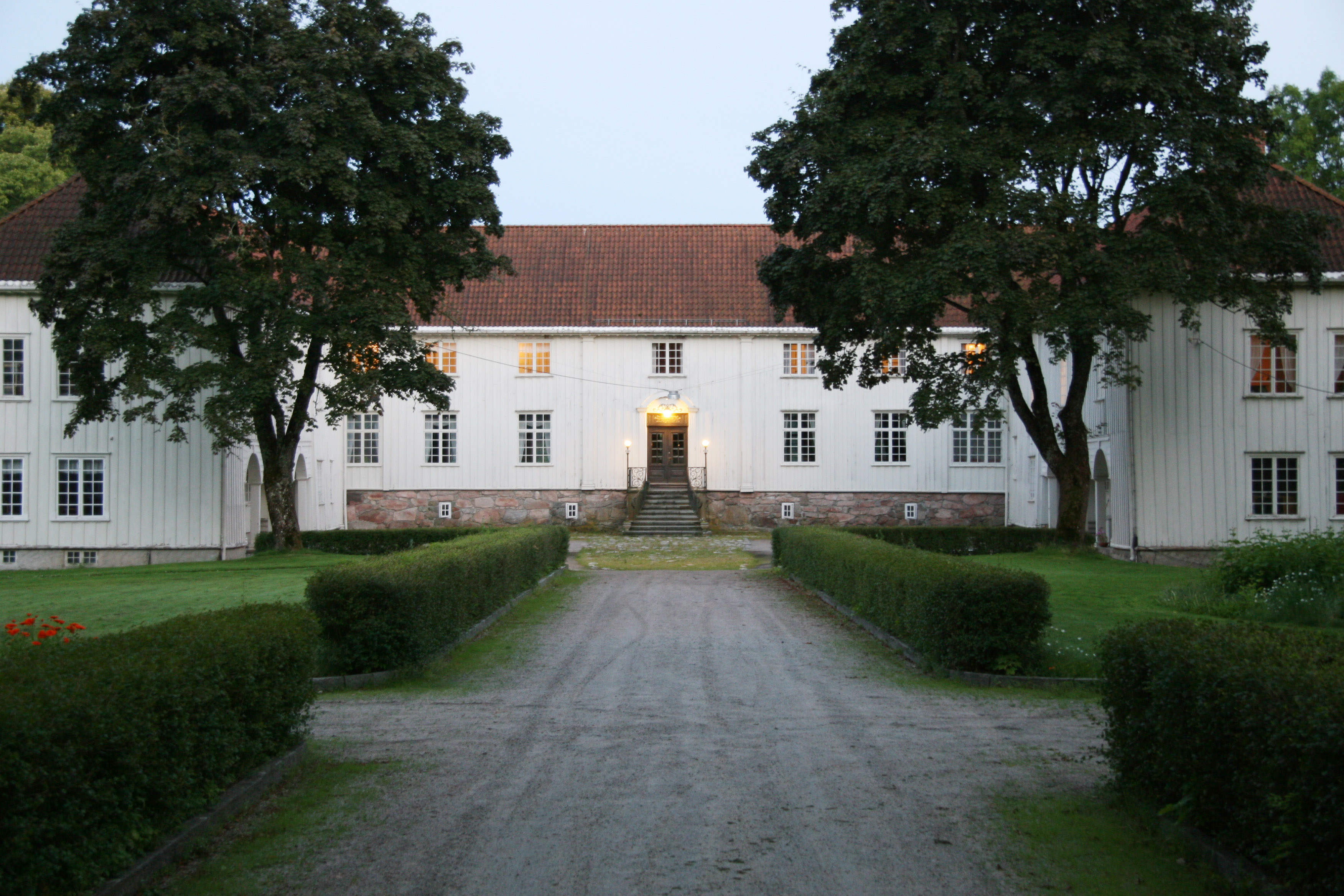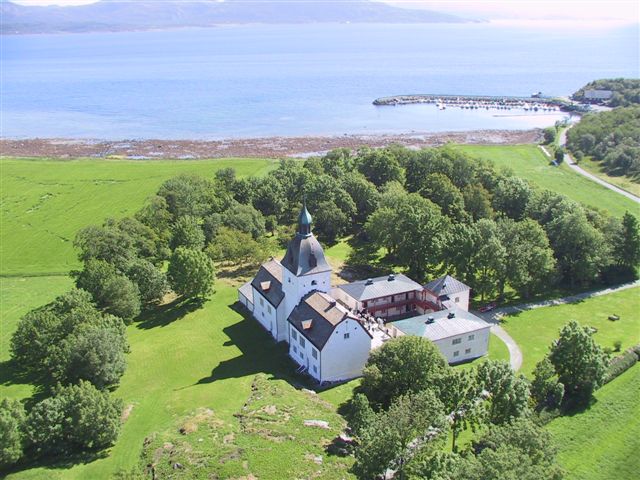|
Elingård Manor
Elingård (''Elingaard herregård'') is a manor house and an estate located at Fredrikstad in Østfold county, Norway. The manor is situated on the Onsøy peninsula outside of Fredrikstad. Elingaard manor is currently operated as a museum. History and description The current main building was erected in the Renaissance style and was completed early in 1749. The building was constructed on two floors and consists of a main wing and two side wings. Outside is a garden laid out in the English manner. Elingård estate was owned by members of the Rosensverd and Gyldenhorn families in the 15th century and of the noble family Brockenhuus in the 16th century. Chancellor of Norway Jens Bjelke acquired the estate through marriage with Sophie Brockenhuus in 1610. With this marriage, he became one of the wealthiest nobles in Norway. It was later inherited by his son, Admiral Henrik Bjelke. Elingård burned down in 1645. In the 18th century the estate was transferred to the Huitfeldt fa ... [...More Info...] [...Related Items...] OR: [Wikipedia] [Google] [Baidu] |
Fredrikstad
Fredrikstad (; previously ''Frederiksstad''; literally "Fredrik's Town") is a List of cities in Norway, city and Municipalities of Norway, municipality in Østfold Counties of Norway, county, Norway. The administrative centre of the municipality is the city of Fredrikstad. The city of Fredrikstad was founded in 1567 by Frederick II of Denmark, King Frederick II, and established as a municipality on 1 January 1838 (see ''formannskapsdistrikt''). The rural municipality of Glemmen was merged with Fredrikstad on 1 January 1964. The rural municipalities of Borge, Østfold, Borge, Onsøy, Kråkerøy, and Rolvsøy were merged with Fredrikstad on 1 January 1994. The city straddles the river Glomma where it meets the Skagerrak, about from the Sweden border. Along with neighboring Sarpsborg, Fredrikstad forms the fifth largest city in Norway: Fredrikstad/Sarpsborg. As of 31 December 2024, according to Statistics Norway, these two municipalities have a total population of 146,001 with ... [...More Info...] [...Related Items...] OR: [Wikipedia] [Google] [Baidu] |
Østfold
Østfold () is a county in Eastern Norway, which from 1 January 2020 to 31 December 2023 was part of Viken. Østfold borders Akershus and southwestern Sweden (Västra Götaland County and Värmland), while Buskerud and Vestfold are on the other side of Oslofjord. The county's administrative seat is Sarpsborg. The county controversially became part of the newly established Viken County on 1 January 2020. On 1 January 2024, Østfold was re-established as an independent county, however without the former municipality of Rømskog, which was amalgamated with the Akershus municipality Aurskog-Høland in 2020. Many manufacturing facilities are situated here, such as the world's most advanced biorefinery, Borregaard in Sarpsborg. Fredrikstad has shipyards. There are granite mines in Østfold and stone from these were used by Gustav Vigeland. The county slogan is "The heartland of Scandinavia". The local dialects are characterized by their geographical proximity to Sweden. The na ... [...More Info...] [...Related Items...] OR: [Wikipedia] [Google] [Baidu] |
Onsøy
Onsøy is a peninsula and a former municipality in Østfold county, Norway. The administrative centre was Gressvik. History The parish of ''Onsø'' was established as a municipality January 1, 1838 (see formannskapsdistrikt). A part of Onsøy with 170 inhabitants was moved to the neighboring municipality Fredrikstad on 1 January 1968. On 1 January 1994 the rest of Onsøy was incorporated into Fredrikstad. Prior to the merger Onsøy had a population of 12.923. Etymology The Old Norse form of the name was ''Óðinsøy''. The first element is the genitive case of the name of the god Odin, the last element is ''øy'' meaning 'island'. The former island was later turned into a peninsula because of post-glacial rebound. Onsøy Church Onsøy Church (''Onsøy kirke'') was built in 1877. The architect was Henrik Thrap-Meyer. The church is of Gothic Revival style and constructed of brick with has 375 seats. Onsøy Church is located in Fredrikstad parish. Jens Bjelke was buried in the ... [...More Info...] [...Related Items...] OR: [Wikipedia] [Google] [Baidu] |
Gyldenhorn
The Gyldenhorn family was an aristocratic family in The Kingdom of Denmark-Norway originating from Østfold and founded in the 14th century. The name Gyldenhorn was later given by genealogists after the coat of arms, a golden horn. History Descent and claims The House was founded in the 14th century by Oluf Torsteinssøn to Eline (Elingård), who lived around 1420, from whom all members descend. The most prominent member of the family was Erik Erikssøn, who in the 1460s was a bailiff in Skien, since a lawyer in Oslo, wrote «to Eline». His son Erik Erikssøn (ca. 1470 – ca. 1535) was a lawman in Oslo, later a commander at Tunsberghus, in 1524 became a ‘Riksråd’ (councillor) and a commander at Båhus castle, and was married to Eline, daughter of councillor Peder Griis. Their daughter Kirsten married the Danish nobleman Eiler Brockenhuus (died 1546). Estate Elingård is a manor house in Fredrikstad (formerly Onsøy) municipality, about 10 kilometres northwest of the c ... [...More Info...] [...Related Items...] OR: [Wikipedia] [Google] [Baidu] |
Chancellor Of Norway
The Chancellor of Norway (modern Norwegian: ''Norges rikes kansler'', "Chancellor of Norway's Realm") was the most important aide of the King of Norway during the Middle Ages, and during the Union with Denmark. He issued laws and regulations, and was responsible for day-to-day administration of the kingdom. From 1270, the Chancellor resided in Bergen. Haakon V of Norway moved the Chancellor's residence to Oslo; on 31 August 1314 the provost of St Mary's Church became Chancellor on a permanent basis. He was given the Great Seal of the Realm "for eternity." The Chancellors were originally chosen from the clergy but after 1542 the position was given to people from the nobility. The position lost its importance after Jens Bjelke's tenure, and was abolished in 1679. Chancellors of Norway Kingdom of Norway (872–1397) * Askatin, 1266–?? * Torer Håkonsson, until 1276 *Orm Merkesmann, 1276–1280 * Bjarne Lodinsson, 1280–99? * Bård Bartholomoeus Serksson, 1299?–1305? * Ivar O ... [...More Info...] [...Related Items...] OR: [Wikipedia] [Google] [Baidu] |
Jens Bjelke
Jens Ågessøn Bjelke (2 February 1580 – 7 November 1659) was a Norwegian nobleman who was Chancellor of Norway from 1614 to 1659, and was succeeded by his son Ove Bjelke. He was the son of Åge Bjelke and Margrethe Thott. At the time of his death, he was Norway's largest land owner. After his tenure as Chancellor, the office largely lost its influence and was abolished in 1679. Education and early career Bjelke was born at Austrått. At 20 years of age, he was sent abroad to study, studying in Rostock,Seentry of Jens Bjelkein Rostock Matrikelportal Leipzig, Leiden and elsewhere. He studied medicine, among other things. On his return on 20 February 1605 he was employed at the Danish Chancery and remained there as a secretary until 20 January 1609. During this time he was assigned the prosecution of the case against Jørgen Dybvad in 1607. He also continued his pursuit of literary works and wrote "Regarding Greenland" on the occasion of expeditions to rediscover that count ... [...More Info...] [...Related Items...] OR: [Wikipedia] [Google] [Baidu] |
Henrik Bjelke
Henrik Bjelke (13 January 1615 – 16 March 1683) was a Norwegian-Danish military officer who served as Admiral of the Realm of Denmark-Norway from 1662 to 1679. He was in command of the Royal Dano-Norwegian Navy from 1657 to 1679. He owned the estates Næsbyholm, Bavelse, and Tersløsegaard south of Copenhagen. Early life and education Bjelke was born at Elingård Manor on Onsøy in Østfold, Norway. He was the son of Chancellor of Norway Jens Bjelke and Sophie Brockenhuus. He was the brother of Ove Bjelke (1611–1674) and Jørgen Bjelke (1621–1696), both of whom also held prominent positions. Although while still very young, he enrolled and registered in 1633 in the University of Padua in Italy. Career Bielke became a soldier under Frederick Henry, Prince of Orange. He resigned from the service of Frederick Henry when he learned of the invasion of Jutland under the command of Swedish Field Marshall Lennart Torstenson in 1644 and went to Denmark. In March of tha ... [...More Info...] [...Related Items...] OR: [Wikipedia] [Google] [Baidu] |
Huitfeldt (noble Family)
The Huitfeldt family is a Norwegian noble family. Name and origin Huitfeldt is originally an old Danish noble family. It came to Norway around 1581 with Anders Huitfeldt (ca. 1555–1620). In 1582 he married Margrete Pedersdatter Litle, the daughter of Peder Hansen Litle, officer in command at Akershus Fortress, and Ingeborg Nilsdatter Gyllenløve. Anders Huitfeldt became the owner of the seat farm Tronstad (''Tronstad Gård'') in Hurum in Buskerud, which for 220 years remained in the family's possession. In Denmark, the family's certainly documented paternal line goes back to Henrik Nielsen (fl. 1429) in Ventofte on Funen. During the Middle Ages, the family used the name ''Hogenskild''. Among these are the known knight Claus Hogenskild (fl. 1386) and member of the Council of the Kingdom Lord Peder Hogenskild (ca. 1400–1478). In 1526, when King Frederik I of Denmark and Norway instructed the Danish nobility to adopt permanent family names, the family took the name Huitfeld ... [...More Info...] [...Related Items...] OR: [Wikipedia] [Google] [Baidu] |
Store Norske Leksikon
The ''Great Norwegian Encyclopedia'' (, abbreviated ''SNL'') is a Norwegian-language online encyclopedia. It has several subdivisions, including the Norsk biografisk leksikon. The online encyclopedia is among the most-read Norwegian published sites, with up to 3.5 million unique visitors per month. Paper editions (1978–2007) The ''SNL'' was created in 1978, when the two publishing houses Aschehoug and Gyldendal merged their encyclopedias and created the company Kunnskapsforlaget. Up until 1978 the two publishing houses of Aschehoug and Gyldendal, Norway's two largest, had published ' and ', respectively. The respective first editions were published in 1906–1913 (Aschehoug) and 1933–1934 (Gyldendal). The slump in sales of paper-based encyclopedias around the turn of the 21st century hit Kunnskapsforlaget hard, but a fourth edition of the paper encyclopedia was secured by a grant of ten million Norwegian kroner from the foundation Fritt Ord in 2003. The f ... [...More Info...] [...Related Items...] OR: [Wikipedia] [Google] [Baidu] |
Libertas (Norway)
Libertas was a Norwegian libertarian business organisation. It was founded in Oslo in 1947. The organisation's first secretary-general was jurist Trygve de Lange. It fought against the regulation politics of the Labour Party, and had considerable influence on conservatives in the 1950s and 1960s. It held lectures at Elingård in Fredrikstad Fredrikstad (; previously ''Frederiksstad''; literally "Fredrik's Town") is a List of cities in Norway, city and Municipalities of Norway, municipality in Østfold Counties of Norway, county, Norway. The administrative centre of the municipal ... from 1948, and published the magazine '' Nå'' from 1952 to 1995. Libertas was succeeded by the Liberal Research Institute in 1988. Trygve de Lange was secretary-general from 1947 to 1976. The chairmen were Odd Berg (1947–1952), Knut Halvorsen (–1965), Johan Hjort (1965–1968), Jens C. Hagen (1968–), Hjalmar Aass (–1978), Birger Halvorsen (1978–), Johan Fredrik Biermann, Sv ... [...More Info...] [...Related Items...] OR: [Wikipedia] [Google] [Baidu] |




